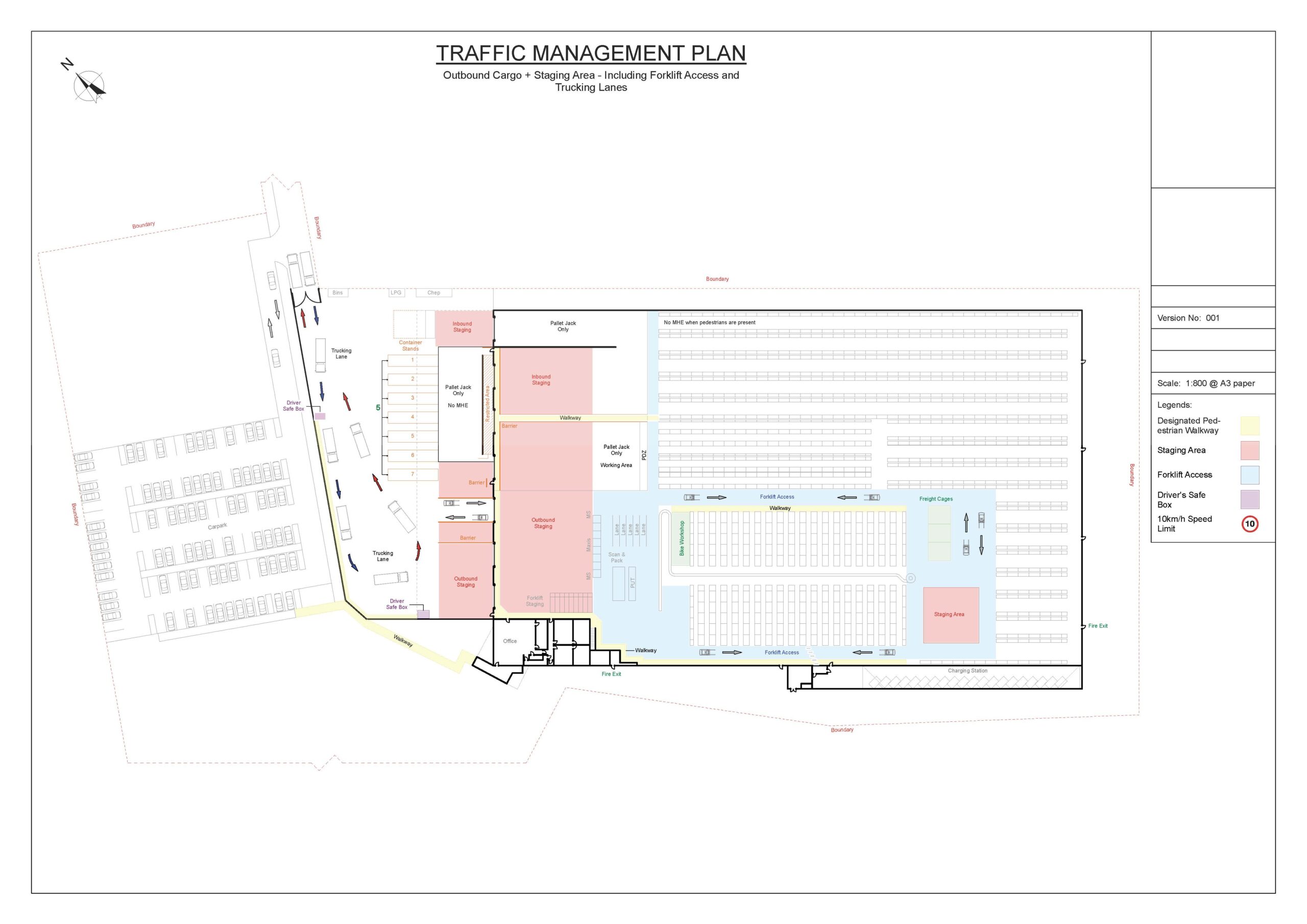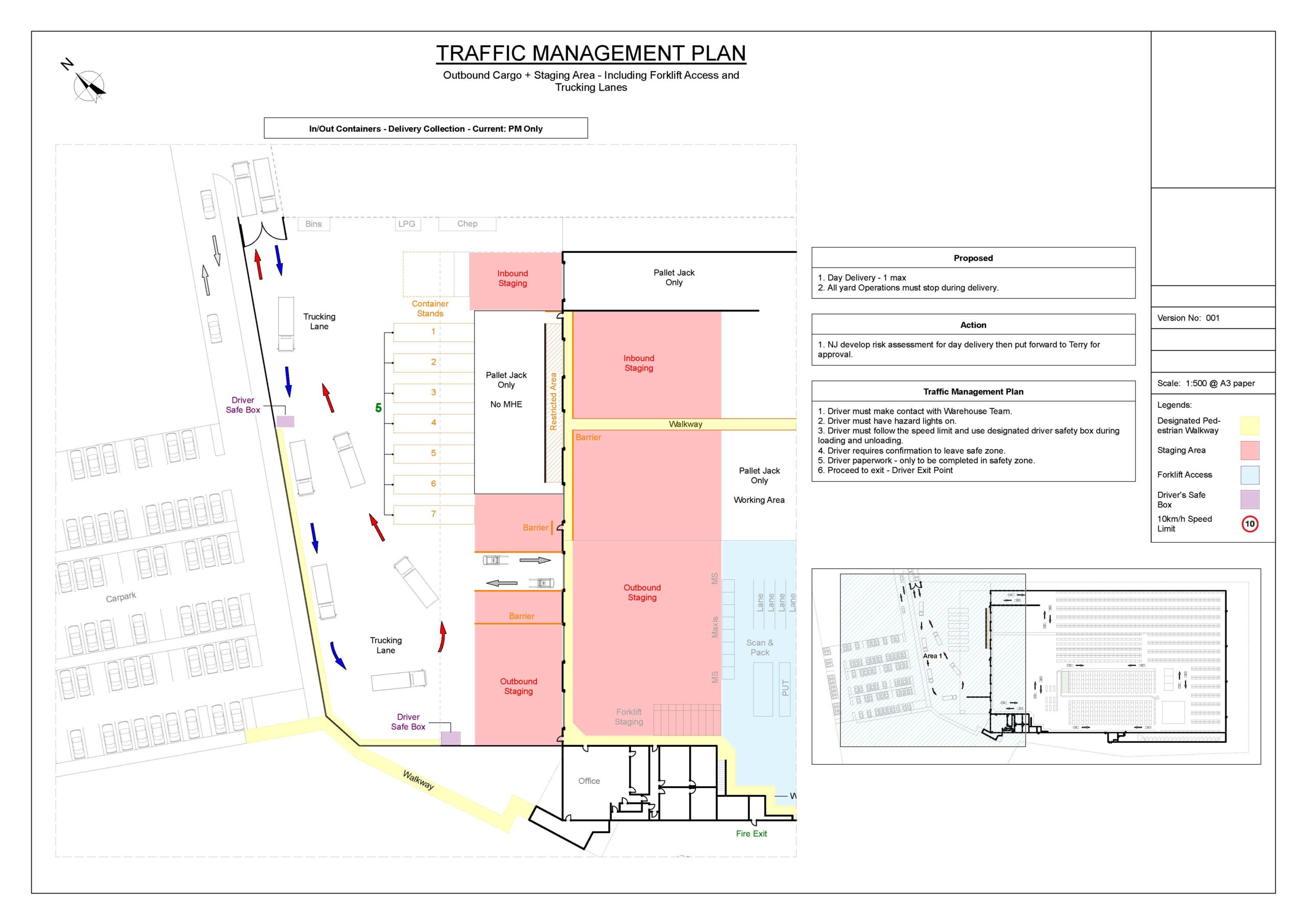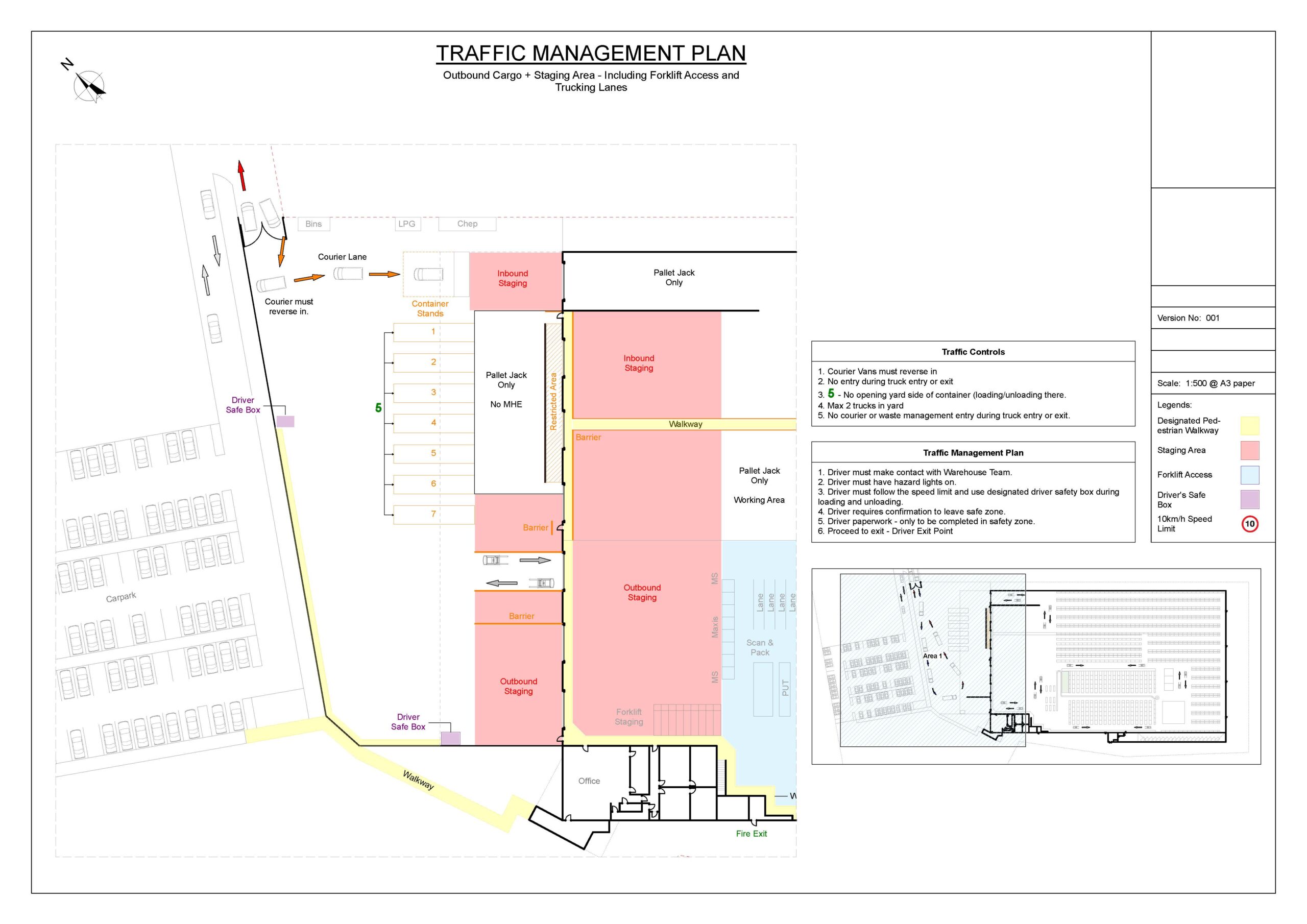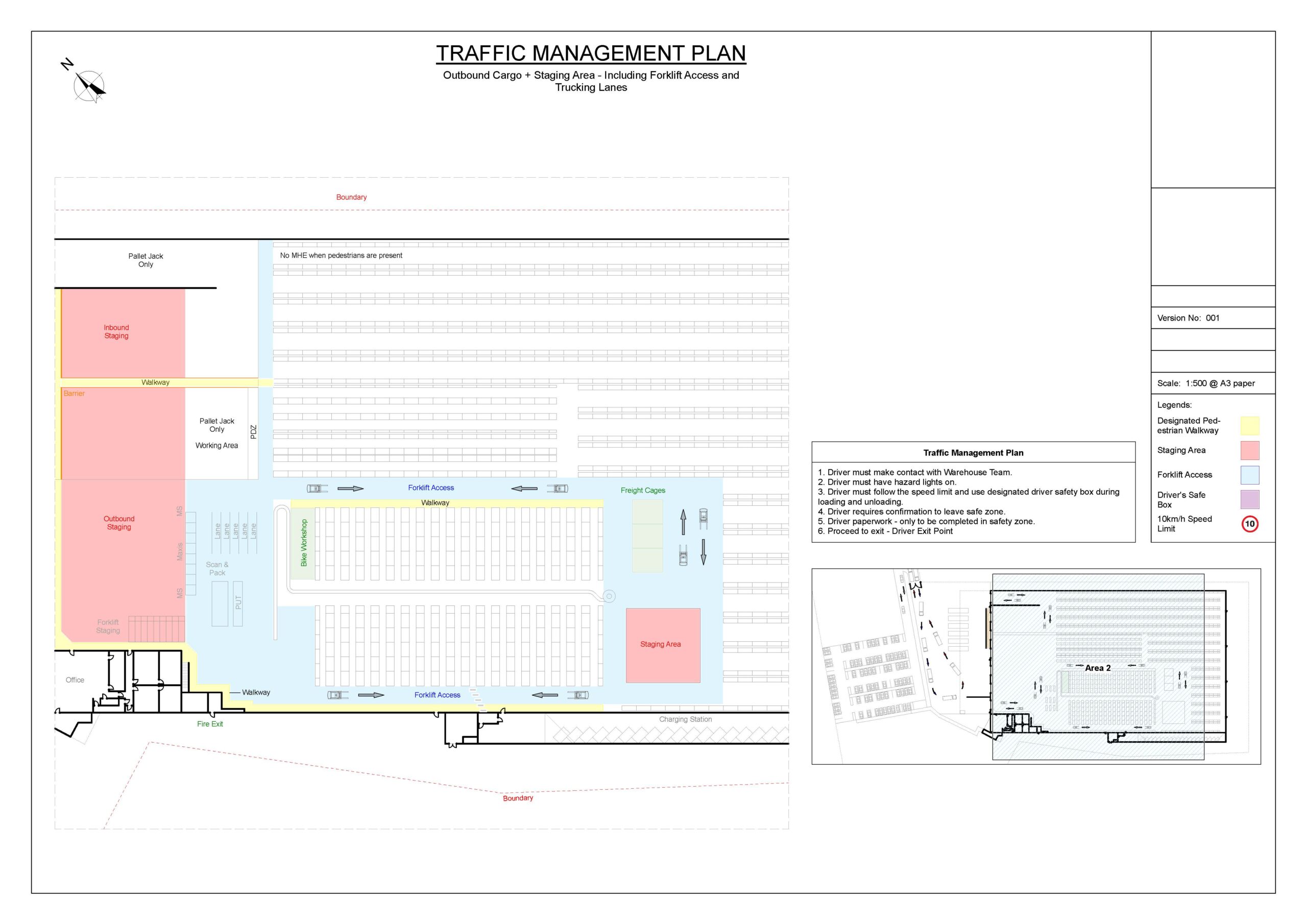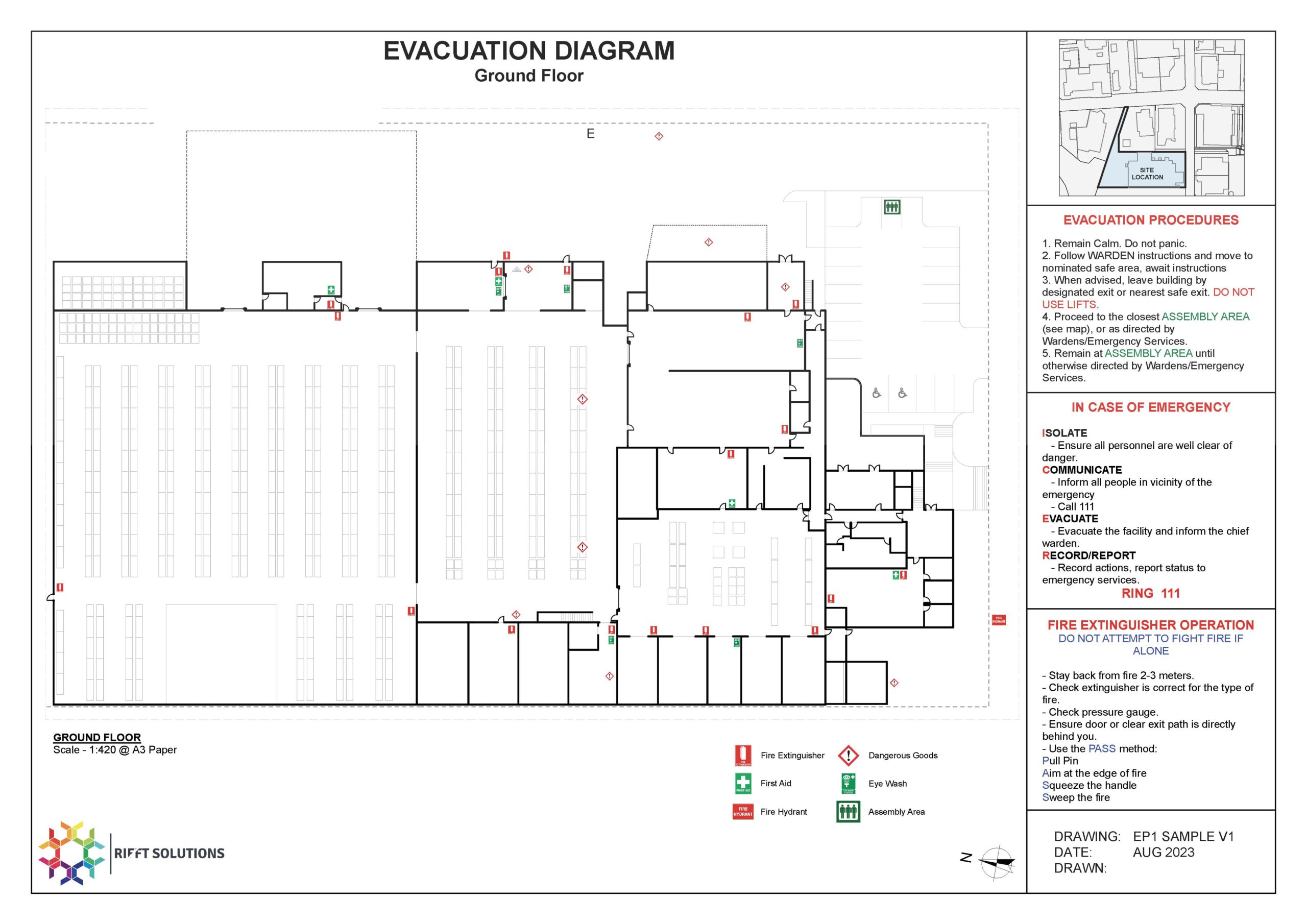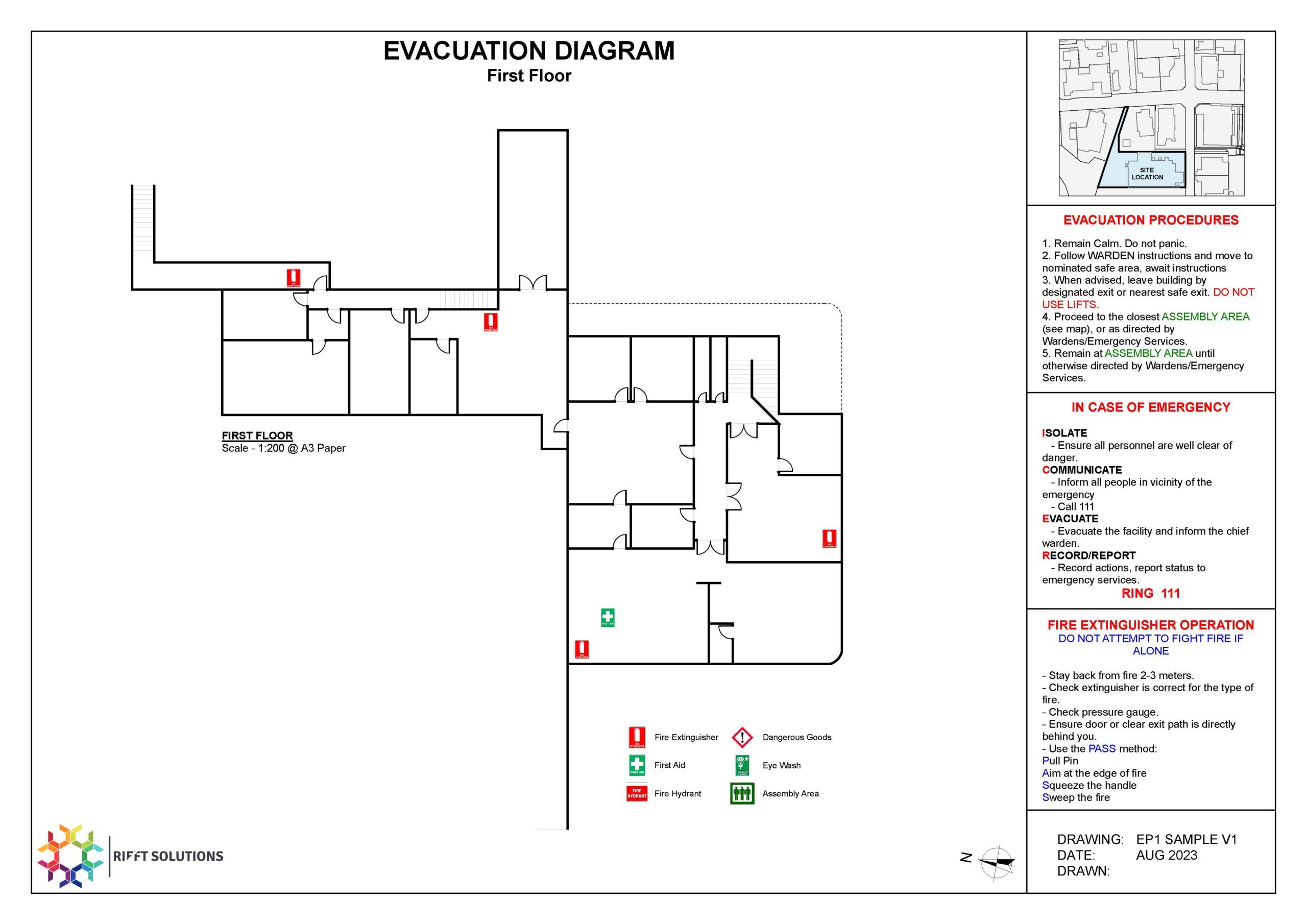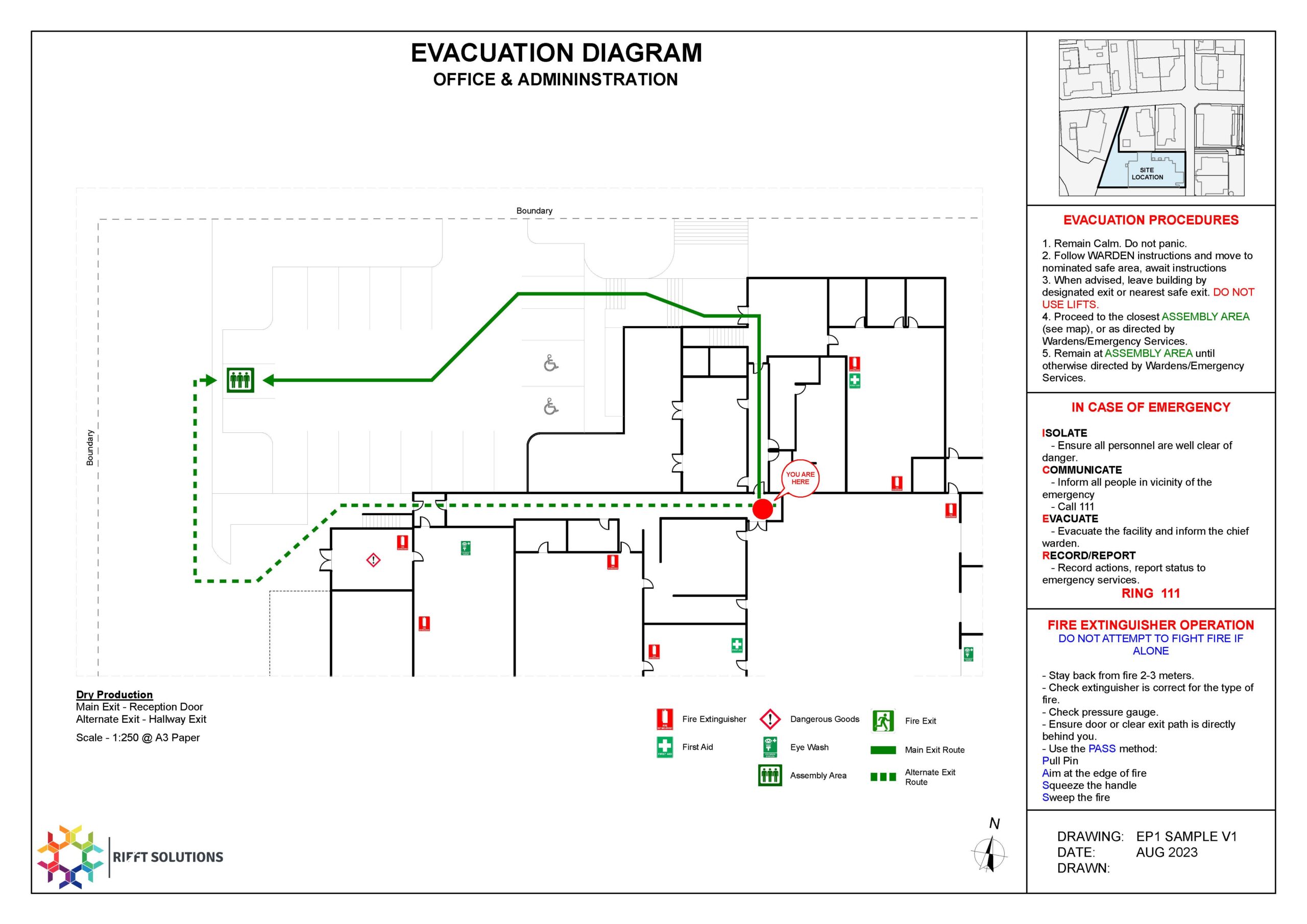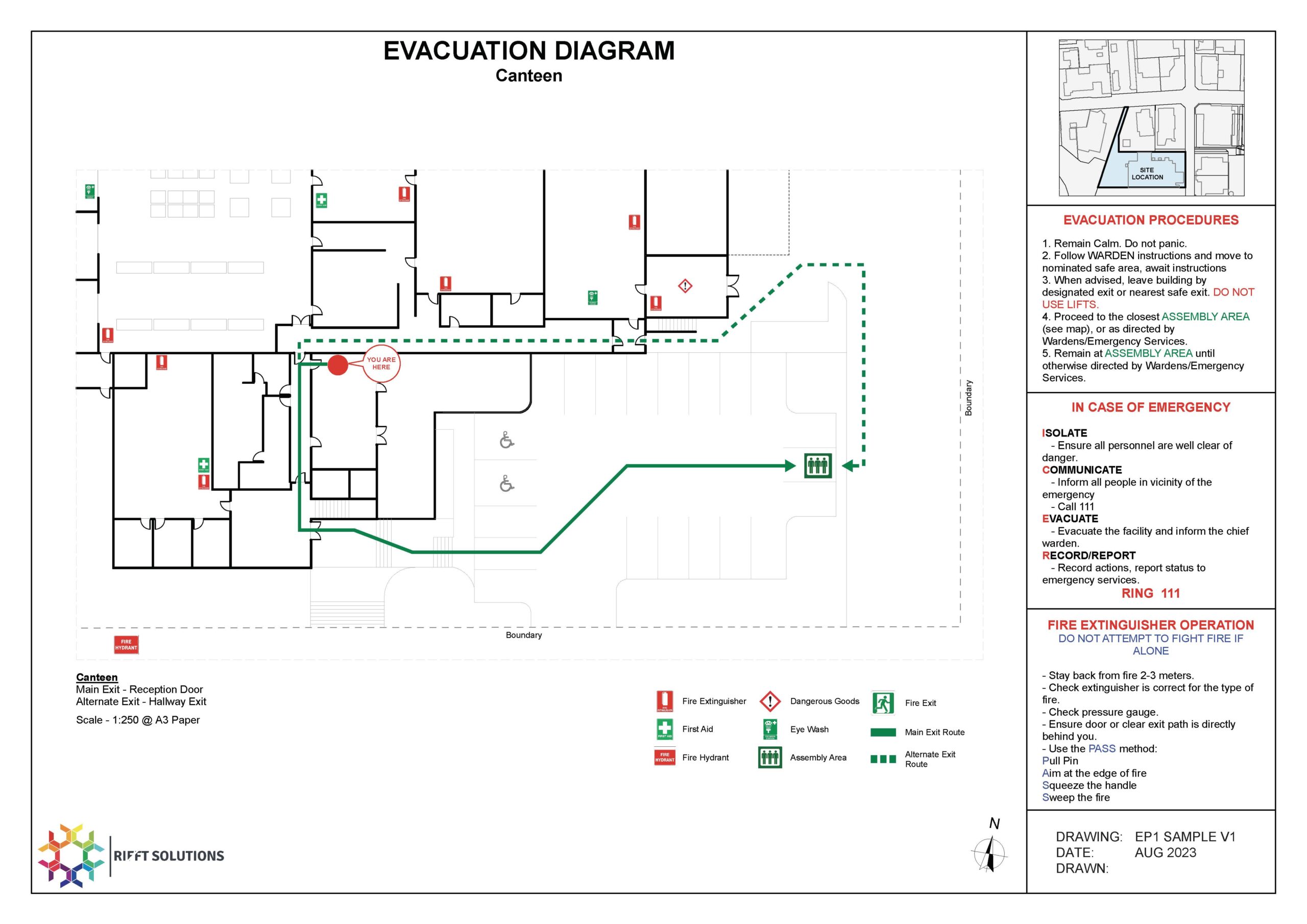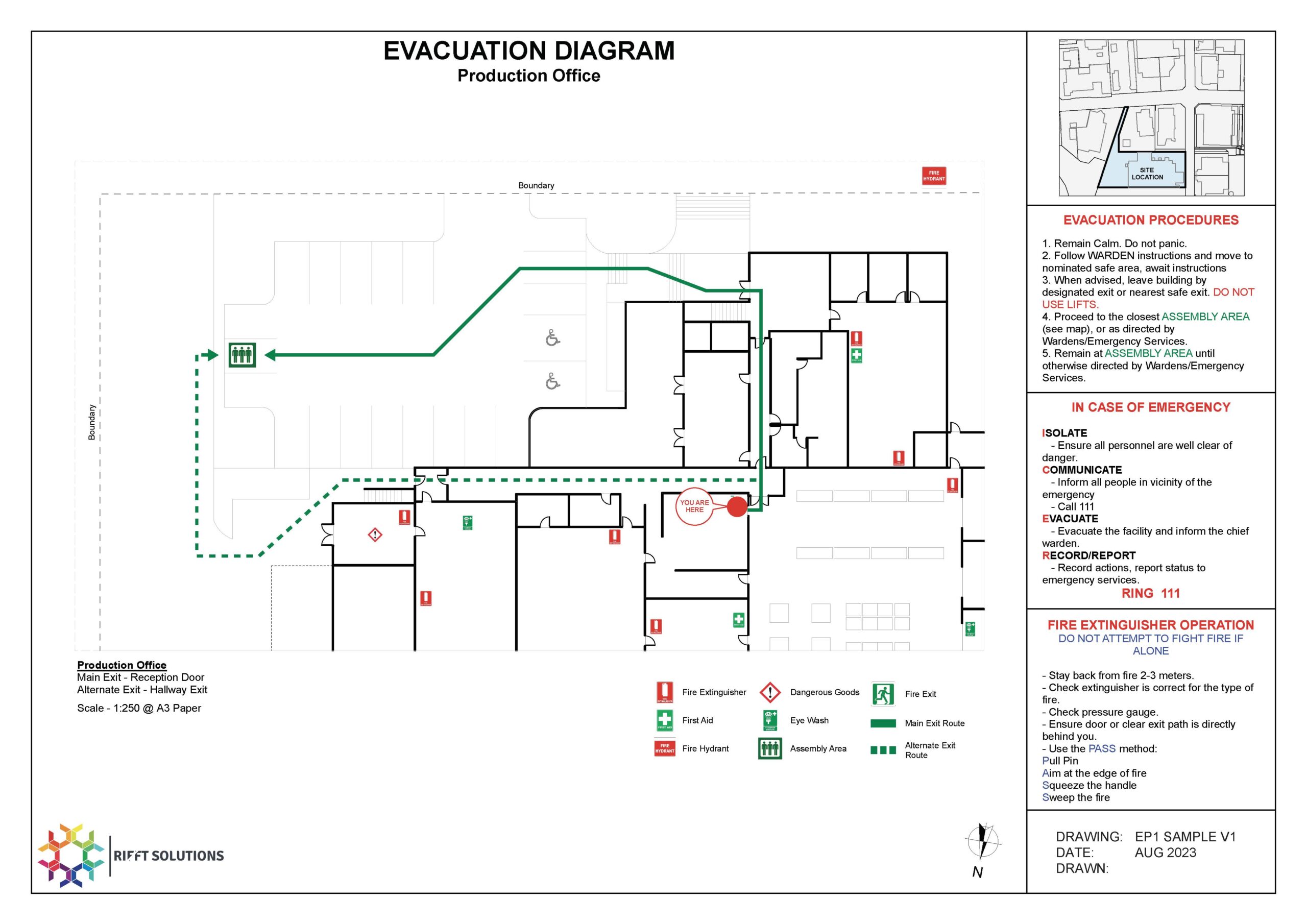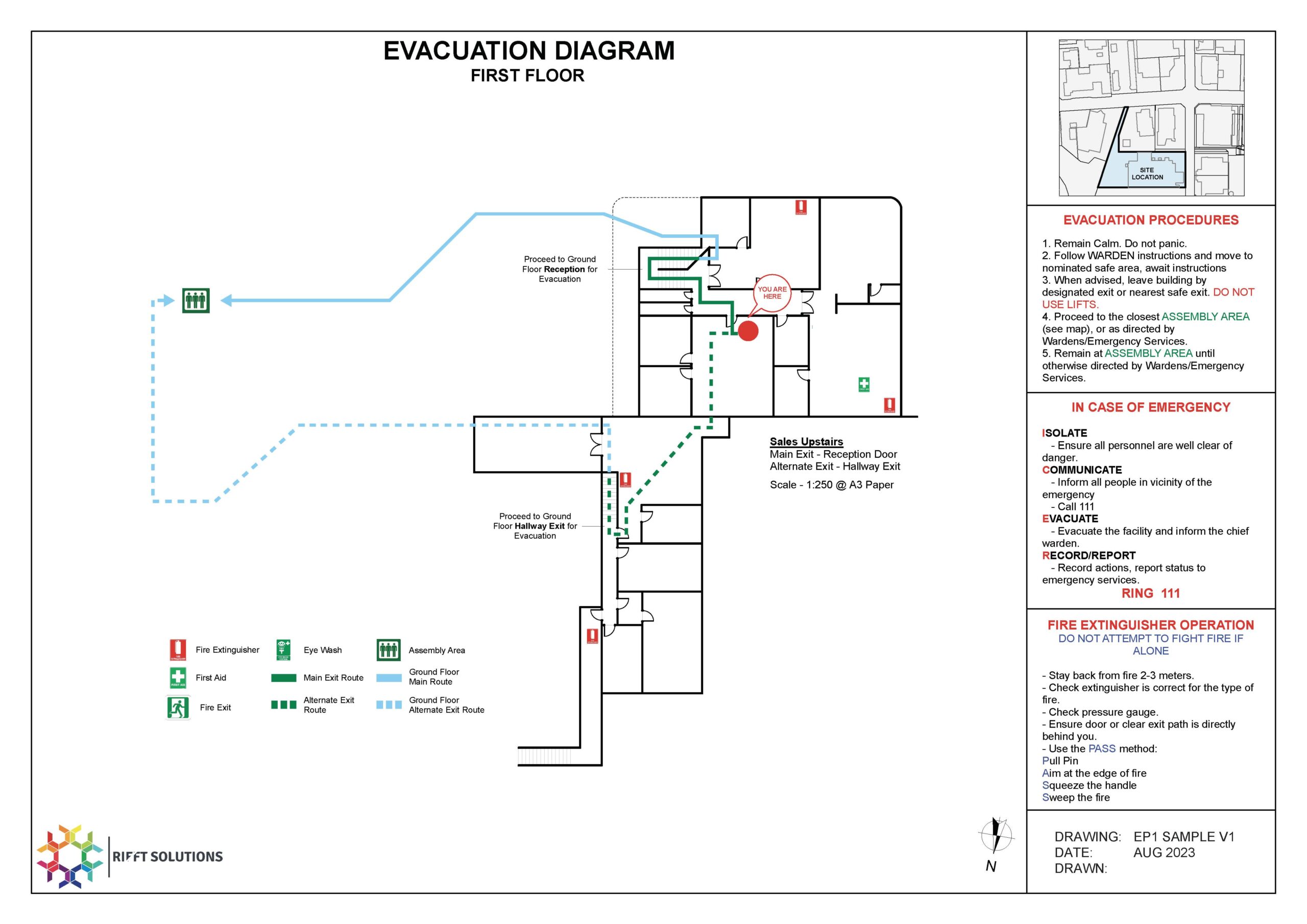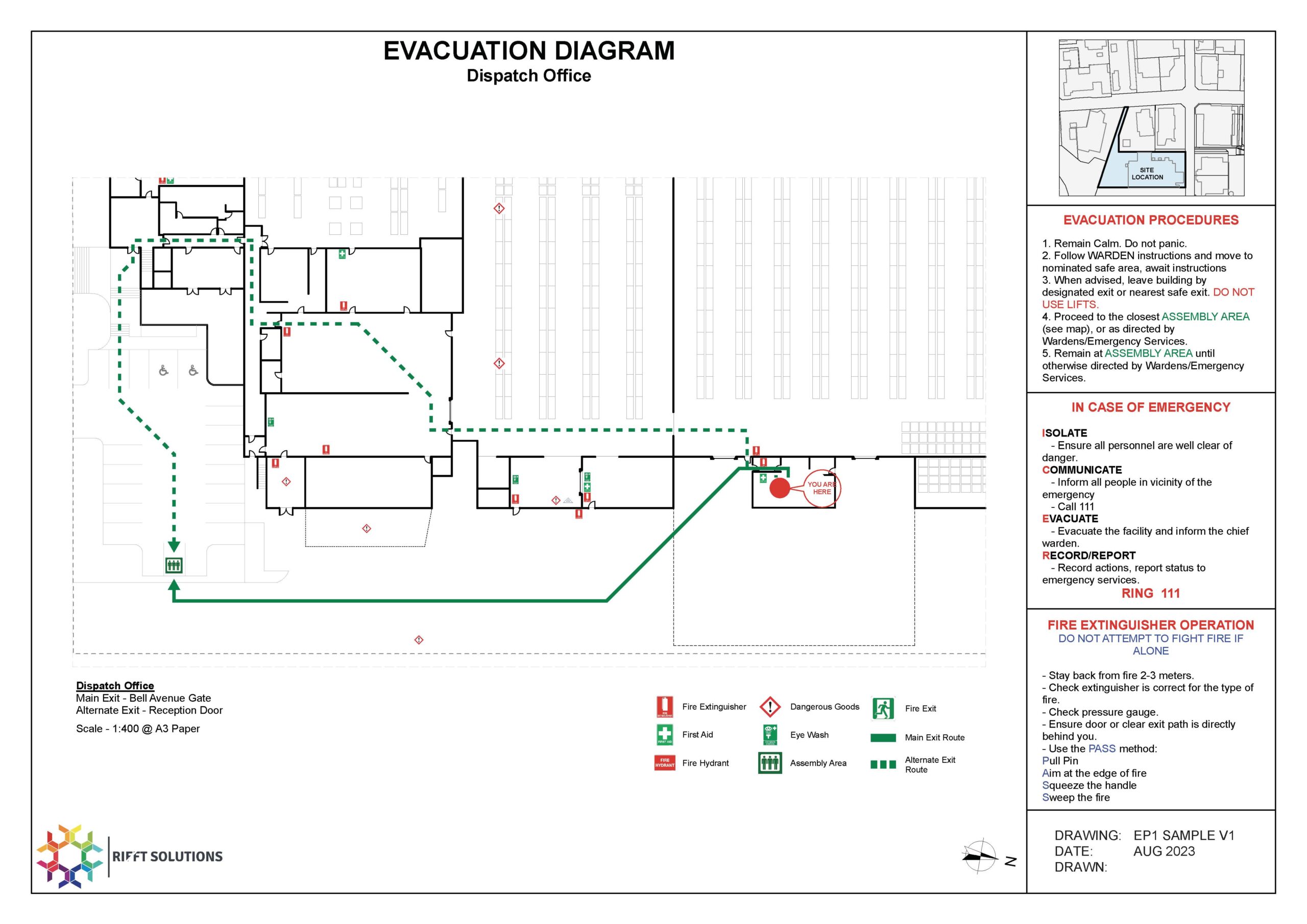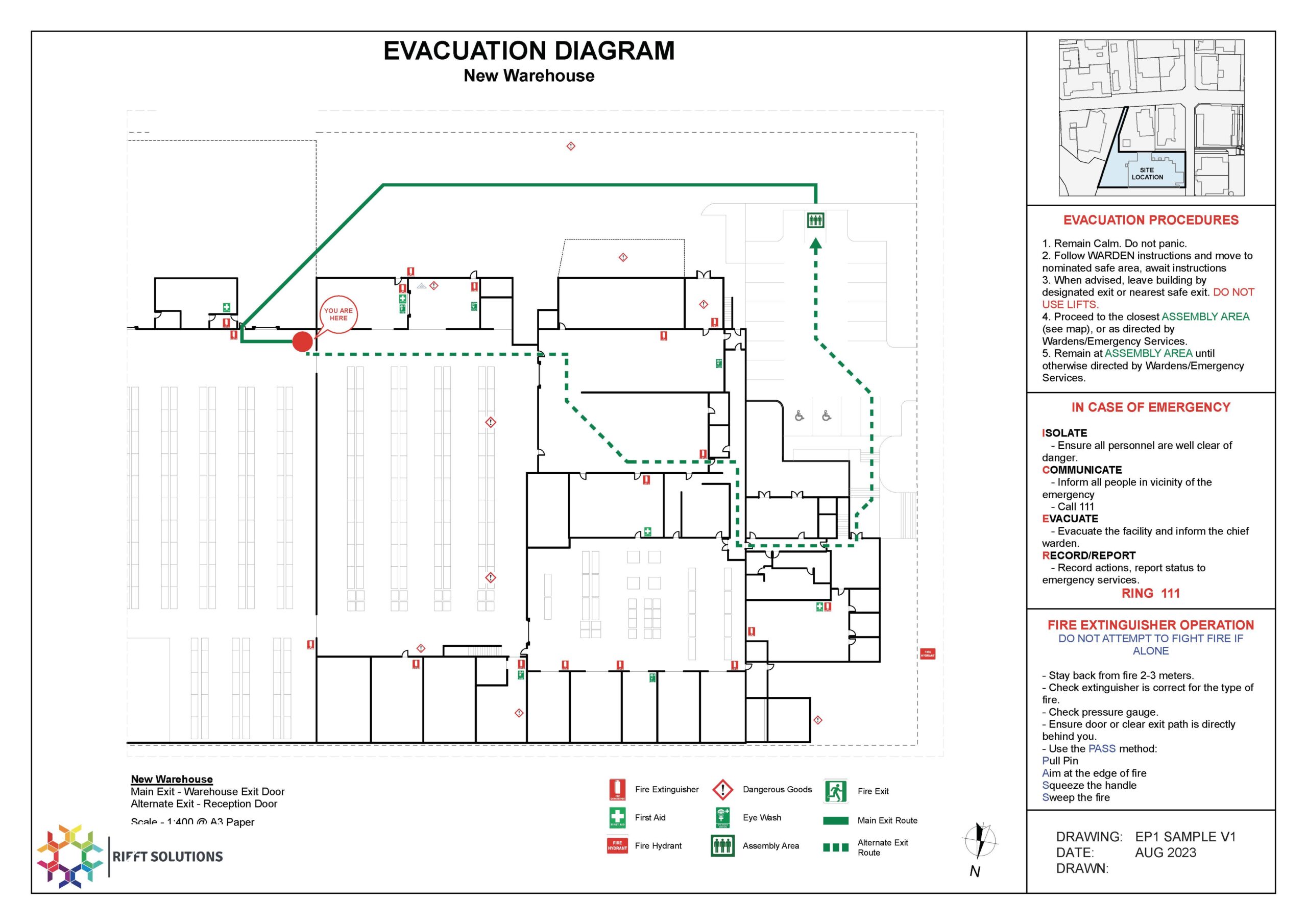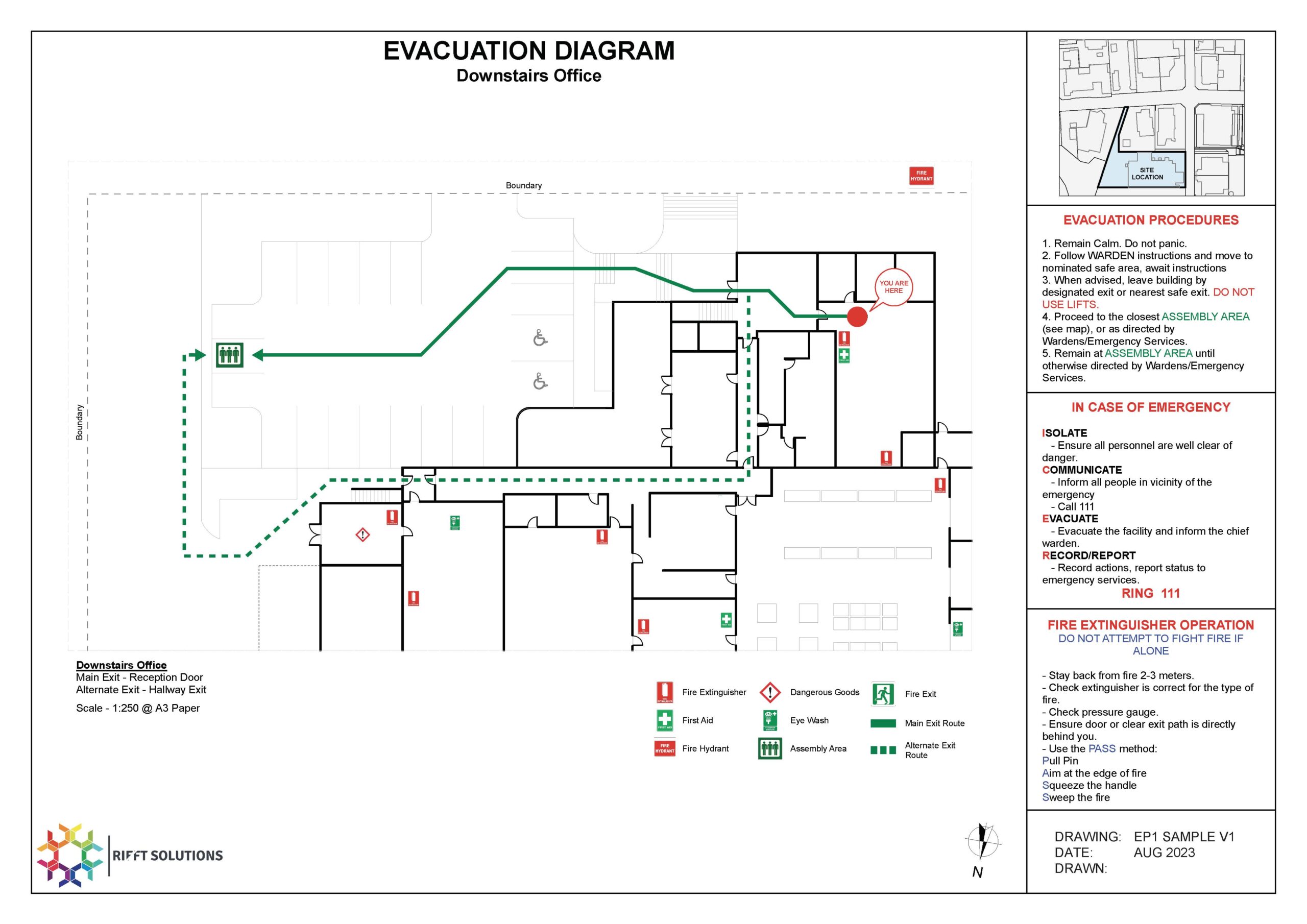Traffic Management and Emergency Evacuation Plans

Traffic Management and Emergency Evacuation Plans are important tools in ensuring the safety of people at the workplace.
If you already have a compliant Hazardous Area Atmosphere Zone Plan, drafting either a Traffic Management or Emergency Evacuation Plan will be an added benefit for the safety of your site
Scroll down below for more information or click on one of the buttons below if you already know what you’re after
Call us for an obligation free quote
Submit your existing site plan for review
We will work with you and will make every effort to ensure our plans are drawn with extreme attention to detail and accuracy.
Traffic Management Plans
Traffic Management Plans are designed to ensure the smooth flow of vehicle and pedestrian movements onsite, effectively managing traffic risks and minimising vehicle-related accidents. These plans clearly define the roles and responsibilities of traffic managers and drivers, as well as daily and emergency traffic control procedures.
Click on the arrows below to browse our work on Traffic Management Plans. Samples of Emergency Evacuation Plans can be found further below
Emergency Evacuation Plans
Emergency Evacuation Plans provide clear guidance to ensure everyone on site knows where to go in the event of an emergency. These plans include detailed directions to assembly points, alternate routes, and the locations of fire safety equipment, dangerous goods, fire hydrants, and assembly areas.
Each Emergency Evacuation Plan placed in the building will have their own relevant directions to the best and alternative routes to the assembly points onsite.
Additional guidelines for Emergency Evacuation Plans
Health and Safety at Work Act 2015 (HSWA): This legislation establishes the framework for workplace health and safety in New Zealand. Employers are required to ensure employee safety and welfare, including the development and implementation of emergency plans.
Fire and Emergency New Zealand Act 2017: This act designates Fire and Emergency New Zealand (FENZ) as the main agency for fire services and emergency management. FENZ provides guidelines for developing evacuation plans and conducts inspections to ensure compliance.
Building Act 2004: This legislation governs building construction, alteration, and demolition in New Zealand. It includes requirements for means of escape, fire safety systems, and emergency lighting, with specific guidance provided by the Building Code.
New Zealand Standard NZS 4503:2005: This standard, “Fire Safety in Buildings,” offers guidance on emergency procedures, including evacuation planning and warning systems. It outlines the responsibilities of building owners, occupants, and employers during emergencies.
Civil Defence Emergency Management Act 2002: This act provides the legal framework for civil defense emergency management, covering planning, response, and recovery at national, regional, and local levels.
WorkSafe New Zealand: As the primary government agency for workplace health and safety, WorkSafe offers guidelines, resources, and information on emergency planning and evacuation procedures.
Get In Touch Today
RIFFT Solutions provides a quick turnaround on site plans, which is critical to ensure safe workplace safety.
Contact us about redrawing or updating your site plan just in time before your compliance audit
